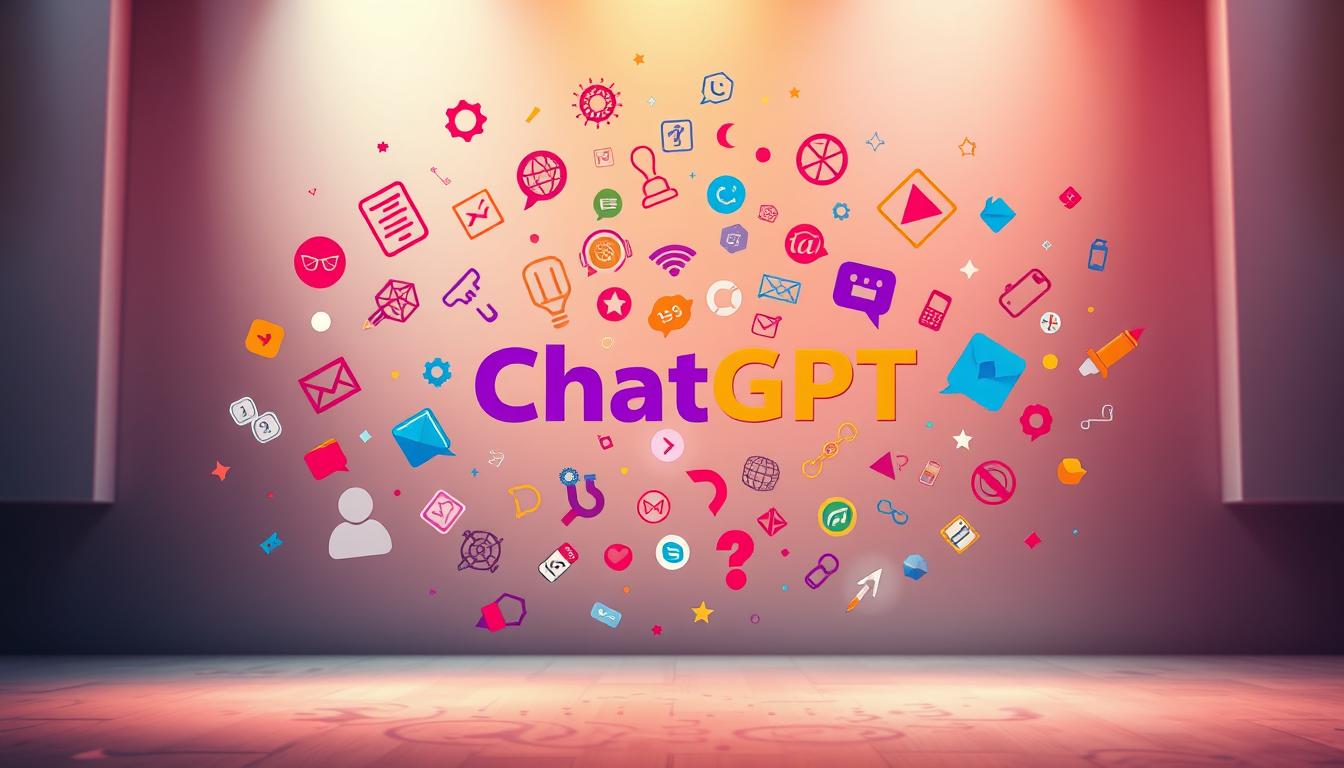ChatGPT is a powerful AI tool that transforms simple text inputs into high-quality responses. Whether you’re a marketer, chef, or content creator, crafting effective prompts ensures accurate and useful output.
This guide explores foundational and advanced techniques for structuring requests. Clear instructions improve the AI’s responses, making them more relevant and actionable.
For example, instead of a vague request, a specific input like “Develop a content marketing strategy for a tech startup” yields better results. Staying updated with AI advancements enhances prompt engineering skills.
Key Takeaways
- ChatGPT requires strategic input for optimal responses.
- Specificity in prompts leads to higher-quality outputs.
- Different industries benefit from tailored requests.
- Natural language processing helps interpret conversational inputs.
- Regular updates improve prompt effectiveness.
Understanding the Basics of ChatGPT Prompts
Clear communication drives better AI-generated results. Whether you need marketing copy or technical advice, structured inputs guide the AI toward useful output. This section breaks down the essentials of crafting effective prompts.

What Makes a Prompt Effective?
Six core components shape quality responses:
- Project description: Define the task clearly (e.g., “Create a blog post about sustainable fashion”).
- Role assignment: Direct the AI’s behavior (e.g., “Act as a financial advisor”).
- Context: Add background (e.g., “Targeting eco-conscious millennials”).
| Effective Prompt | Ineffective Prompt |
|---|---|
| “As a nutritionist, draft a 3-day meal plan for diabetics focusing on low-glycemic foods.” | “Tell me about food.” |
| Includes role, context, and output specs. | Lacks direction and details. |
Common Pitfalls to Avoid
Steer clear of these mistakes:
- Vagueness: “Write something creative” leaves too much room for interpretation.
- Overloading: Avoid cramming multiple tasks into one prompt.
- Ignoring tone: Specify if you need formal or casual language.
For more examples, explore these 20 mind-blowing prompts to refine your approach.
Craft Detailed and Specific Prompts
Detailed requests unlock the full potential of AI tools. The more precise your instructions, the better the results. Avoid vague language and focus on specificity to guide the AI effectively.

Use Clear Action Words
Start with strong verbs to direct the AI’s response. Passive phrasing slows down results. Compare these approaches:
- Weak: “Could you explain how this works?”
- Strong: “Explain how this JavaScript function works.”
“Draft a 500-word blog post about renewable energy trends for startups.”
Provide Sufficient Context
Background details refine outputs. For instance:
- Without context: “Write a product description.”
- With context: “Write a playful product description for a vegan snack brand targeting Gen Z.”
Include Examples for Clarity
Show the AI exactly what you need. A table highlights the difference:
| With Examples | Without Examples |
|---|---|
| “Generate three headlines like: ’10 Budget-Friendly Marketing Hacks for 2024.'” | “Create headlines.” |
Specify tone, style, and format for consistency.
Assign Roles and Style for Better Outputs
Role-playing transforms AI responses from generic to expert-level. By defining personas and stylistic preferences, users tailor content to match professional standards. This approach works for internal memos, niche blogs, or creative scripts.

Give ChatGPT a Persona
Assigning roles aligns output with real-world expertise. Examples include:
- HR manager: “Draft an internal memo about remote work policies.”
- SEO expert: “List long-tail keywords for vegan skincare.”
Personas reduce vague replies. A PR consultant prompt yields polished press releases, while a financial advisor generates data-driven insights.
Emulate a Specific Tone or Format
Style and tone adjustments add authenticity. For instance:
- 1930s newsreel: “Write a radio ad for a vintage coffee brand.”
- Academic tone: “Summarize this study for a peer-reviewed journal.”
| With Role/Style | Without |
|---|---|
| “As a travel blogger, describe Bali in a quirky, upbeat tone.” | “Tell me about Bali.” |
Clear directives save time and refine content quality.
Advanced Strategies for Refining Prompts
Mastering advanced techniques enhances AI interactions. Beyond basics, methods like chained prompting and leveraging conversational memory elevate outputs. These strategies save time while delivering precise, context-aware responses.

Use Chained Prompting for Complex Tasks
Break multi-step projects into smaller requests. For example:
- Step 1: “Outline a business plan for a flower shop.”
- Step 2: “Expand Section 3 into detailed marketing tactics.”
Iterative feedback refines results. A Second Source example shows how this process builds comprehensive plans.
Leverage ChatGPT’s Conversational Memory
The AI recalls prior exchanges within a session. Use this to:
- Reference earlier discussions (e.g., “Based on our Paris travel tips, add hotel recommendations”).
- Maintain consistency in tone or data across prompts.
Request Multiple Perspectives
Ask for varied viewpoints to enrich outputs. For instance:
“Compare vegan and keto diets from a nutritionist’s and chef’s perspectives.”
This works well for pet blogging niches, where diverse angles engage readers.
| Single Prompt | Multi-Perspective Prompt |
|---|---|
| “List benefits of solar energy.” | “Summarize solar energy benefits for homeowners, environmentalists, and policymakers.” |
Conclusion
Mastering effective prompts transforms AI interactions. Specificity, role assignment, and iterative refinement elevate outputs. Experiment with chained prompting or custom instructions for sharper results.
Prompt engineering skills open career opportunities, like Vanderbilt University’s specialized course. Consistent practice improves collaboration with AI tools over time.
Ready to level up? Apply these steps today. Refine your process, and watch your content thrive.

